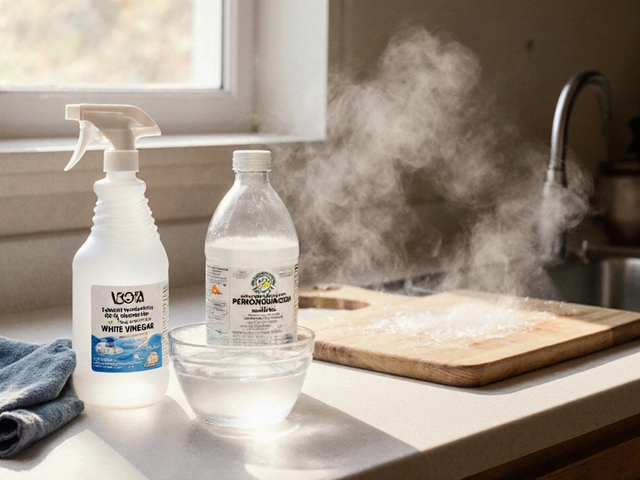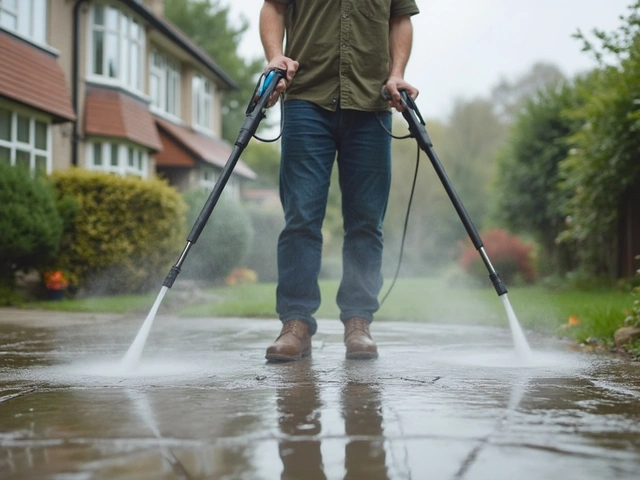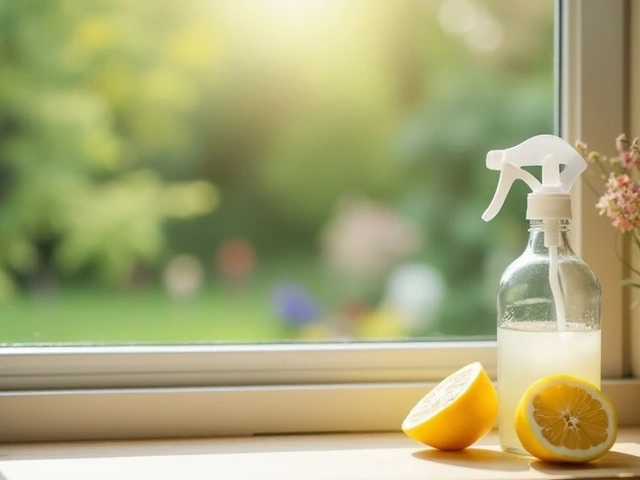If you popped open your oven right now, would you see a crime scene of old pizza cheese and mysterious black crust? You're not alone. Cleaning the inside of an oven is one of those jobs nobody gets excited about, mostly because regular sprays and elbow grease barely make a dent when facing months of baked-on mess.
Most stores sell foam sprays, heavy-duty gels, and even eco-friendly options for oven cleaning. But does any of this stuff really break through burnt fat and sticky spills? The truth is, some products work fast with minimal effort, while others leave you scrubbing for hours and wondering if it was even worth it.
The best oven cleaner isn't always the flashiest brand or the one with the biggest claims. People swear by a few classics, like Easy-Off for serious jobs—but there are also tricks using stuff you already have at home. If you're trying to avoid harsh fumes, a couple of DIY solutions actually do a decent job on lighter grime. We’ll get into what works best for every situation.
If you want a spotless oven but never want to spend your weekend choking on chemical clouds, there's a smarter way to handle it. Picking the right cleaner and knowing a few practical shortcuts can completely change the game. Want to know what’s actually going to save you time and sanity? Keep reading.
- Common Oven Cleaners: What’s on the Shelf
- Picking the Real Winner: Side-by-Side Results
- Natural and DIY Solutions: Do They Actually Work?
- Best Cleaning Tips for a Spotless Oven
Common Oven Cleaners: What’s on the Shelf
Walk down the cleaning aisle, and the choices for oven cleaners can feel endless. You've got sprays, foams, heavy-duty gels, and a few that say "natural" in giant letters. What sets these apart?
The heavy hitters are the chemical-based cleaners. Products like Easy-Off and Mr Muscle have been around forever—they use a mix of sodium hydroxide and other strong ingredients. These are designed to power through burnt food, tough grease, and stains that have been there since your last birthday party. They usually come in either spray or aerosol form, so you can coat the inside easily. Average wait time is about 15-30 minutes before you wipe it down. Gloves are a must, and you definitely want some fresh air because the fumes can get rough.
Then there are the "fume-free" versions. These promise the same cleaning results, but without filling your kitchen with eye-watering smells. They tend to work slower or need a thicker layer to be effective, and sometimes they need to sit overnight on the messiest spots.
Oven cleaning brands aren’t just chemicals nowadays. More people are grabbing plant-based and eco-brand cleaners, like Method or Ecover. These use natural ingredients like baking soda and vinegar, and they work best for light or medium grime. Just don’t expect them to magically erase super old, stubborn stains—if your oven looks like a pizza graveyard, you’ll need the stronger stuff.
Here’s what you’ll typically see on shelves:
- Heavy-duty chemical sprays: For the worst, caked-on grime. Usually fastest and most thorough.
- Fume-free cleaners: Gentler on the nose, but slower and require patience.
- Eco-friendly/plant-based cleaners: Good for regular maintenance and lighter stains.
- Oven cleaning kits: Sometimes sold as a combo of scraper tools, sponges, and gels for deep cleaning.
To give you a quick idea, here’s an honest look at what people typically buy and how they stack up in terms of popularity:
| Brand/Product | Type | Best For |
|---|---|---|
| Easy-Off | Chemical Spray | Burnt-on grease, heavy messes |
| Mr Muscle | Chemical Spray | Quick, tough jobs |
| Method | Eco/Plant-based | Everyday grime, light soils |
| Ecover | Eco/Plant-based | Maintenance cleans |
| Zep Heavy-Duty | Gel | Industrial-strength, deep clean |
Choosing between them mostly depends on how bad your oven looks and how you feel about using chemicals around food prep spaces. If yours is just a bit greasy from last week’s roast, a plant-based cleaner might do the trick. But if you’re dealing with burnt sugar that’s basically superglued to the bottom, you want something with serious muscle.
Picking the Real Winner: Side-by-Side Results
Let’s get honest: Not all oven cleaners are created equal. I’ve tried them on everything—week-old roasted chicken grease and forgotten lasagna sauce included. What ended up working best surprised me, and it might change the way you approach this chore.
The old school champ, Easy-Off, dominates most review charts for one reason—it just works. Spray it on, wait a half hour, and thick gunk comes off with a wipe. You’ll want gloves and a window open, though. The fumes are strong, but no regular store-bought cleaner tackles burned-on fat quicker.
On the flipside, Method Heavy Duty Degreaser is a top pick for people who want less chemical stink. It smells way better, and while it takes longer—usually needing a couple of rounds for heavy grime—it’s far more pleasant to use if you’ve got pets, kids, or just can’t stand harsh odors. The trade-off? A little more scrubbing needed for the really tough spots.
Baking soda and vinegar? It’s the favorite for DIYers and can make a difference on light buildup. But if your oven looks like it survived a five-alarm chili spill, it’s not the miracle people hope for.
| Product | Strengths | Downsides | Best For |
|---|---|---|---|
| Easy-Off | Melts tough, baked-on grease fast | Strong fumes, need gloves | Deep cleans, heavy mess |
| Method Heavy Duty | Low odor, safer ingredients | Multiple applications, elbow grease | Everyday upkeep, lighter grime |
| Baking Soda + Vinegar | Non-toxic, cheap | Not great on heavy residues | Light stains, freshening up |
If you’re going for the best oven cleaner that handles it all in one go, Easy-Off takes the prize for heavy messes. If you can stay on top of things and don’t mind a bit more rinsing, Method is great for maintenance. For anyone on a tight budget or avoiding chemicals, baking soda and vinegar are good backup, but don’t set your hopes too high for caked-on disasters.
The real trick is matching the cleaner to your oven’s current state. Don’t waste your time (or money) on gentle sprays if your oven needs a rescue mission. On the other hand, for minor spills or a quick refresh, milder options work just fine—and your goldfish won’t be gasping at the smell, either.

Natural and DIY Solutions: Do They Actually Work?
The internet is flooded with homemade oven cleaner hacks—baking soda pastes, vinegar sprays, lemon juice scrubs. But you’re probably wondering if any of these actually get results or if they’re just ways to avoid having your kitchen smell like a chemistry lab. Here’s what’s legit.
The most popular natural oven cleaner mix is a combo of baking soda and water. Stir up about a half-cup of baking soda with a couple tablespoons of water until it forms a spreadable paste. If you’re feeling brave, toss in a little dish soap. Spread it over the grimy spots, let it hang out overnight, and then wipe it off the next day. For lots of people, this knocks out light grease without heavy scrubbing.
If you want to turbocharge it, spray some white vinegar on the baking soda after it sits for a while. The fizzing action helps lift more gunk. No, it’s not magic—don't expect it to dissolve thick, burned-on stains in one shot. For fossilized lasagna explosions, you’ll still need a scraper or a little elbow grease.
Lemon juice alone smells nice and leaves some shine, but it won’t do much to break down stuck-on grease unless the mess is super fresh. Lemon paired with salt (for scrubbing) works better on oven doors than inside the cavity.
- Natural cleaners are way less harsh on your oven’s surfaces and the air you breathe.
- They’re budget-friendly—it’ll cost you under two bucks for a round of cleaning.
- They’re safest for households with little kids or pets like Bubbles, my goldfish, who wouldn’t do well with harsh fumes nearby.
Still, if your oven looks like it hosted a fireworks show, these gentle methods are best for maintenance cleaning, not rescue missions. For everyday upkeep, natural stuff is solid. For the really scary jobs, traditional oven cleaning products pull ahead.
Best Cleaning Tips for a Spotless Oven
Nobody wants to spend all day wrestling with greasy racks and weird leftovers from last year’s turkey. So, here’s how to make oven cleaning suck a lot less, based on what actually works in the kitchen.
The very first tip: always heat your oven a little before cleaning. About 10 minutes at 150°F softens grease so it wipes off easier. Don’t try this if you’re using cleaners with strong fumes, though—just for DIY or gentler products.
- Best oven cleaner products almost always say to let the solution sit. Give the cleaner at least 20-30 minutes (longer if you’re fighting old gunk).
- Line the bottom of your oven with reusable oven liner sheets. These save you time every single clean, since you can just pull out the liner and rinse it in the sink.
- Don’t forget the racks. Take them out, soak them in a bathtub with hot water and regular dish soap, and scrub with a non-scratch pad. Dishwasher tabs can help too—just toss one in with the racks for extra power.
- For oven doors and the glass, use a mix of baking soda and water to form a thick paste. Spread it on, wait 20 minutes, and then wipe it off with a damp cloth. This method works surprisingly well and won’t scratch the glass.
- If you’re short on time, do a “maintenance wipe” after roasting anything messy. Even a quick swipe with a damp rag stops grime from turning into cement later on.
If your oven smells bad after cleaning, just leave a dish of lemon slices in the oven at 200°F for 30 minutes. It’ll knock out most odors and leave things smelling fresh.
Fun fact: according to a 2023 survey from a popular consumer magazine, people who clean up little spills and splatters right after using the oven spend 70% less time on deep cleans each year. Basically, catch messes early and you won’t dread cleaning day.





